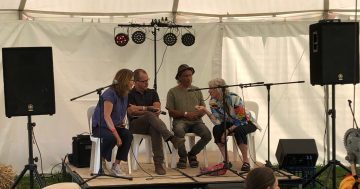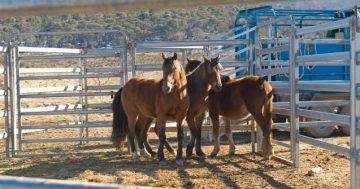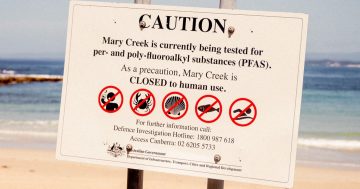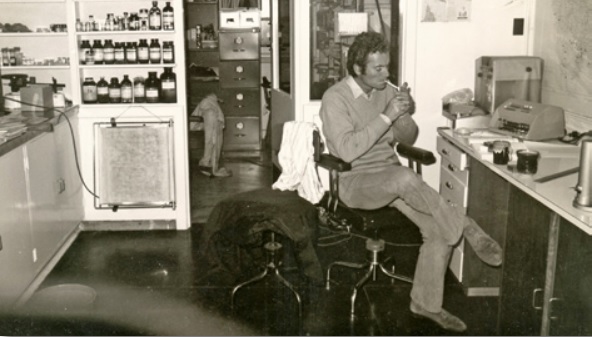
Spradbery after a night’s wasping in Hobart. Photo from his online resume.
An old school CSIRO scientist who was a passionate believer in scientific research for the public good has died.
Dr Philip Spradbery was familiar to many Canberrans for his research, advocacy and activism around the invasive European wasp threat.
Born in the UK, he was a keen Boy Scout as a child and an athlete, student journalist and cartoonist during his Zoology degree at Queen Mary College, University of London. He joined CSIRO as a research entomologist in the battle against the Sirex Woodwasp, a softwood pest that still threatens vast tracts of commercial forestry in the US. The parasitic insects CSIRO bred for biological control in the 60’s continue to be deployed there.
Dr Spradbery spent 40 years with CSIRO Entomology and was a Senior Principal Research Scientist, arriving in Australia in 1971. His research life involved working in 35 different countries worldwide, including more than a decade in Papua New Guinea working on the screw-worm fly, the most serious entomological threat to Australia’s livestock industries with potential annual costs of about $1 billion should it be established here.
In 1988 he chose to leave the CSIRO payroll but remained at CSIRO Entomology as an Honorary Fellow to focus on the passionate interest he had developed in European wasps. In 1993, he established XCS Consulting Pty Ltd, which represented the interests of some 60 scientists and technologists, many of whom had retired from CSIRO or been made redundant during the financial purges of the period.
He was also a key independent player in the United Nations’ Food & Agriculture Organization’s attempts to eradicate the screw-worm fly from the Middle East following an overwhelming outbreak in Iraq in 1996.
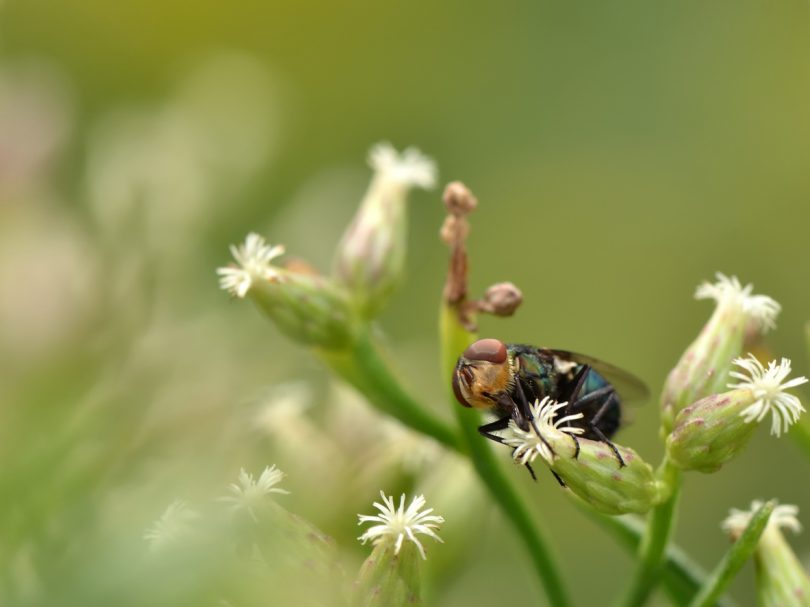
Screw-worm flies are flesh-easting pests that Philip Spradbery has conducted extensive research on. Photo is of a Secondary Screw-worm fly.
Until the end of his life, Dr Spradbery was engaged in full-time research on European wasps and was always a ready source of expert information and advice on dealing with the dangerous pest. He appeared frequently in local and national media stories, rejoiced in the media nickname ‘Dr Wasp’ and provided advice on the dedicated wasp hotline from his Yarralumla home laboratory.
It was a practical concern: plenty of Canberrans have been hospitalised over the years suffering intense pain from wasp stings which last for up to 24 hours. Dr Spradbery, who removed his first European wasp nest when he was a 16-year-old, said the wasps also preyed on important pollinators of native plants, collecting up to 100kg of insect prey in a year.

How to identify a European wasp: they have prominent black and yellow stripes with black spots down their abdomen. Photo: City Services.
Dr Spradbery was a passionate advocate for science in the public good: he worried about whether changes at the CSIRO had diminished the critical importance of entomology and whether young scientists would be forced to travel overseas for research and employment as a consequence.
A keen horticulturist, his front garden had been opened during Floriade, while his back garden was devoted to fruit trees and vegetables, including a precious Seville orange, the keen jam maker’s fruit of choice. The tree was used to produce marmalade that truly reached international standards of excellence: Dr Spradbery once won a Silver Award in the Gardener’s Marmalade category from British-based The World’s Original Marmalade Awards.
He was also a keen sailor and motorist who brought his Austin Healey 3000 Mk III with him when he arrived in Australia.
A lifelong amateur artist and cartoonist, he undertook courses at the ANU School of Art and illustrated many of his own publications.
Original Article published by Genevieve Jacobs on The RiotACT.








